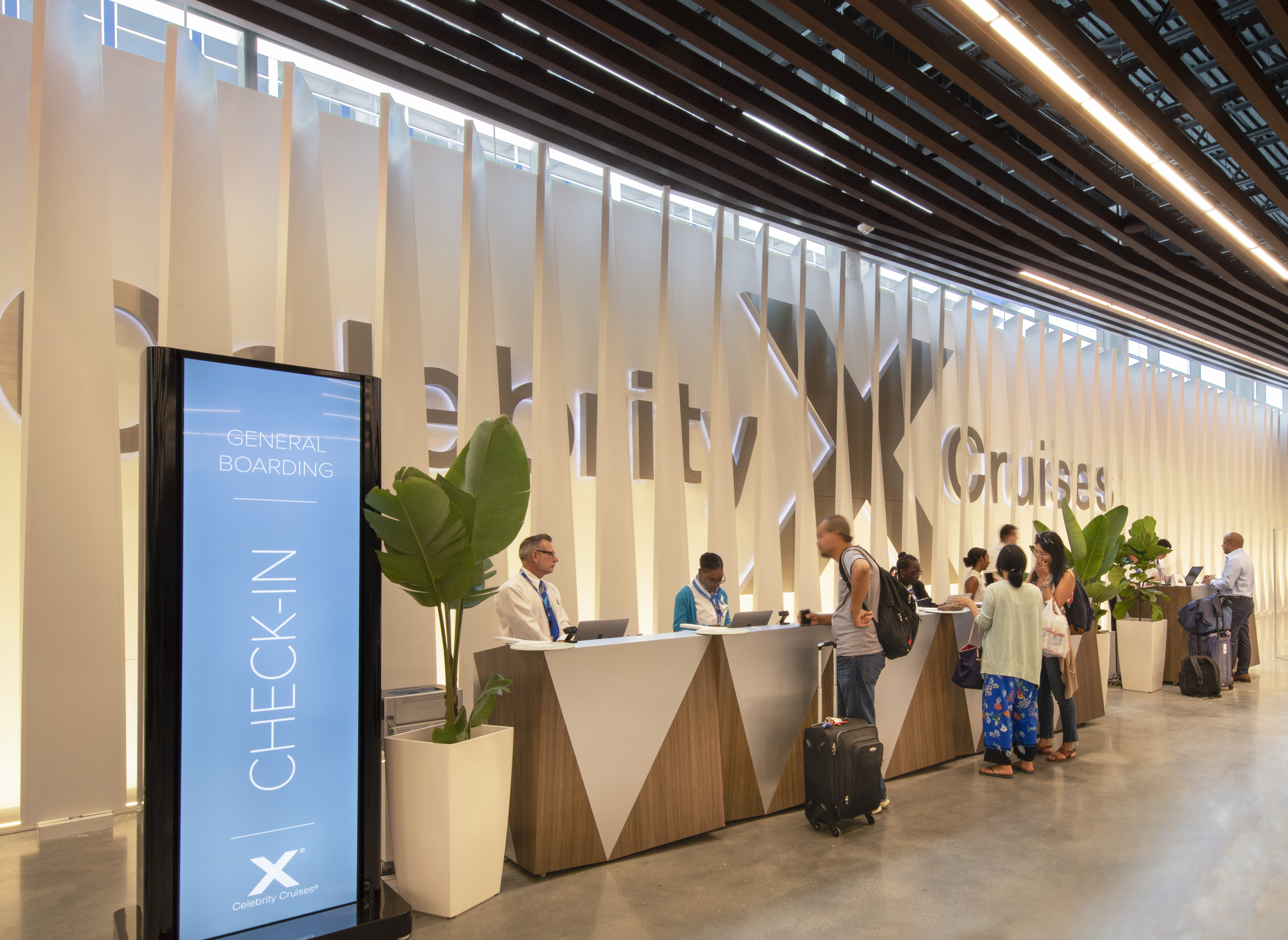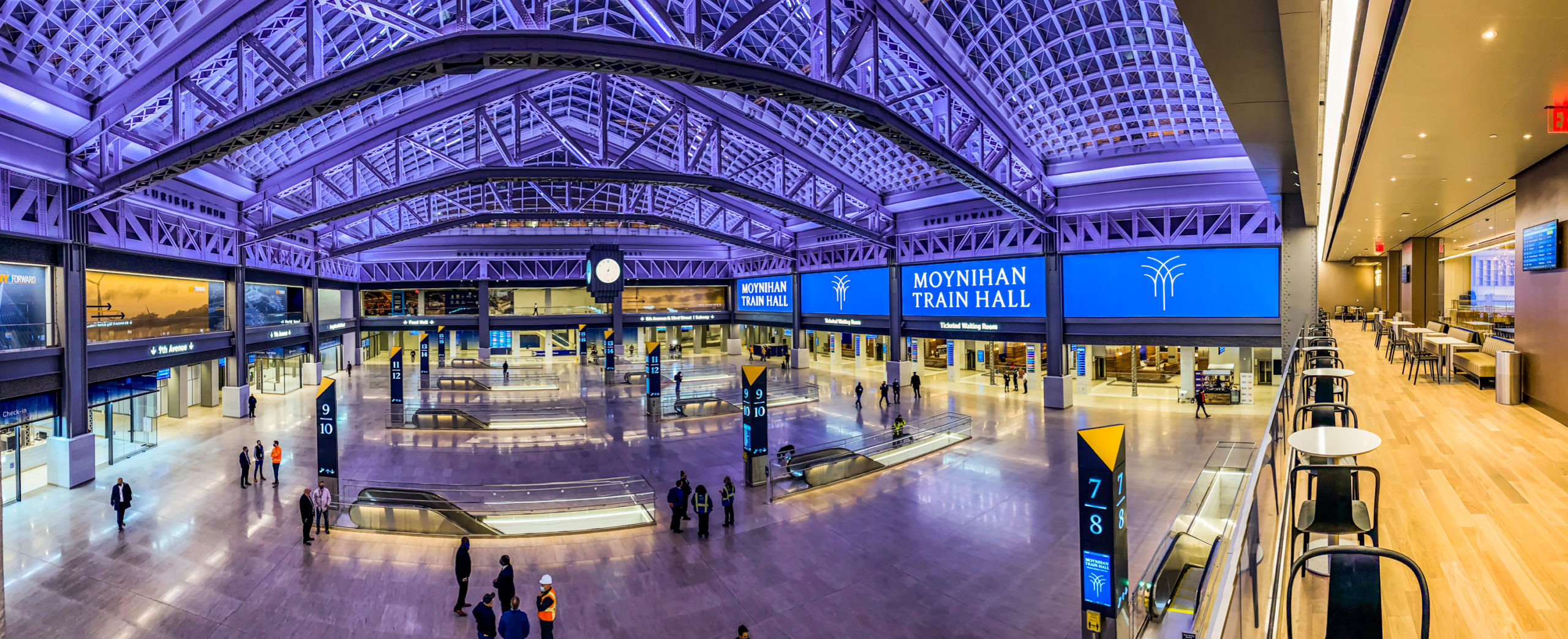Effects of the COVID-19 pandemic have rippled through virtually every industry, leaving many Americans jobless and prompting the declaration of a national emergency. But the coronavirus outbreak and subsequent curtailing of travel, both local and international, have exacted a particular devastation on the transportation industry.
The U.S. Transportation Security Administration (TSA) screened more than 2 million passengers on an average day in 2019. By April 14, 2020, one month after the State Department warned against international travel because of the risk of transmitting COVID-19, that number had dropped to just 88,000. New York City Subway ridership sunk by 90 percent as employers closed offices and implemented work-from-home plans last spring. Similar scenarios played out around the United States and the world.
[AV Tech Keeps Passengers On Track and On Time]
Making Lemonade out of Lemons
While passenger numbers have recovered some ground since then, many transportation facilities used the extended period of reduced passenger loads as an opportunity to make improvements to their physical footprints.
“Airports that were already slated for upgrades and renovations have been able to move at a rapid pace while their terminals are less busy,” said Charles Kowalczyk, domestic sales operations manager at AtlasIED. “High-traffic domestic airports like Salt Lake City, LaGuardia, Newark, Palm Beach, Orlando, Dallas, and Denver have all had projects stay on course or have accelerated projects as a result of the reduction in travel.”
[New Dante AVoIP Comms Systems Join Legacy CobraNet Tech at LaGuardia]
Decision-makers in the transportation industry are recognizing that digital signage is a cost-effective communications tool that can inform, educate, and even enrich passengers’ lives as they travel through transportation environments. “Instead of it being an add-on, we clearly see that digital signage technology is increasingly being integrated into the original scope of design so that its appearance within these busy environments is an expected and welcome addition,” said Paul J. Fleuranges, a transit industry veteran who serves as a board member of the Digital Signage Federation.
[The Digital Signage Best Practices Guide]
Wayfinding, gate information, boarding sequence, baggage information, parking information, and advertising content are coming together to enhance communication to all travelers. “Digital signage in airports isn’t about flight data anymore,” said Kowalczyk. “Audiovisual has become a strategic part of upgrade planning as many airports are evaluating the need for audio, video, or audio and video information deployment in an effort to develop a less invasive public address environment.”

Real-Life Example
Penn Station in New York, the busiest passenger rail station in the Western Hemisphere, recently completed its expansion into the adjacent James A. Farley Post Office Building, now known as Moynihan Train Hall. The new facility celebrated its grand opening on Jan. 1, 2021.

Digital amenities in the station include digital arrival and departure screens for Amtrak and the Long Island Rail Road positioned in the main waiting hall, as well as digital screens positioned inside interactive kiosks throughout the facility that display train departure and destination information in several languages. The station also includes ADA features like an induction loop for hearing-impaired passengers.
Travelers are greeted in the main hall of the Moynihan Train Hall by 1,700 square feet of 4mm-pixel-pitch direct view LED screens that run along one side of the expansive room, separated into four distinct panels.
“The screens are currently displaying vibrant, experiential multimedia developed by Montreal’s Moment Factory, one of the world’s leading digital design and experiential content creation firms,” said Fleuranges. “The colorful pieces captivate the attention of travelers as they walk across the giant main hall, or as they descend with bags in tow on modern escalators to catch their trains on the tracks below.”
In the near future, Fleuranges said, advertising provided by corporate sponsors will share the vast content space at Moynihan Train Hall. This type of mixed-use messaging, combining arrival, departure and other contextual information with targeted advertising, is becoming a standard practice.
Additional Revenue
Transit venues aren’t just using digital signage to inform passengers—there’s been a boom in advertising on video walls, kiosks, and more.
[The Integration Guide to Video Walls]
“We have found that digital signage has allowed our customers to effectively reach their passengers as well as effectively use such technology for marketing and advertising purposes at the same time,” said Jacob Dylan, a project executive at Baker Audio Visual. “This has allowed something that used to be cumbersome and very hard to update to be turned into a digital asset that enables our customers to generate revenue as we as communicate with their target audience.”
The New York City region’s other major airports, Fleuranges said, aren’t far behind Penn Station. “As Clear Channel Airports rolls out its advertising platform over the next two or so years, LaGuardia Airport’s terminals—as well as those at JFK and Newark Liberty International—will have state-of-the-art digital signage communications platforms to communicate and engage with customers while also generating significant advertising revenue,” he said.
Can You Hear Me Now?
Installing new visuals at transit venues is great, but all that messaging is wasted if the messages aren’t received by travelers. It’s especially crucial to get the audio right during a weather or safety emergency, where patrons must receive and understand instructions quickly and fully.
“The P.A. system must account for the acoustical environment and have system diagnostics in place to ensure proper volumes in those varying environments, taking into consideration not only the structure but also the ambient noise on a typical day,” said Kowalczyk.
Despite Moynihan Train Hall’s high ceilings and open floor plan—and the fact that it was constructed within an existing building that served a different purpose entirely—Fleuranges insists the audio at the train station comes in loud and clear. “Audio can surely help the customer experience, but getting it right is hard—especially in environments where acoustics were not part of the original construction,” he said. “Places like airports, where you can control for ambient noise more easily and where announcements of gates and departures is integral to operations, have been industry leaders in the use of audio. As is the case with digital signage, it has to be designed into the scope the beginning to ensure maximum benefit.”
The customer experience can make or break a transportation facility’s reputation, added Kowalczyk. “For example, airports are rated on timely departures, and routine paging for late travelers helps passengers get to their destinations on time while providing higher satisfaction ratings for airlines by avoiding delays or by allowing for gate change facilitation.”
There is more to creating a positive customer experience through AV, though. Sound has the power to promote specific feelings, noted Dylan, which can be valuable in reducing passenger stress. “Background music is soothing and eases the mind,” he said. “Literally in every single situation, having music on really does do something to the brain, completely changing the environment and making it a more enjoyable one. We have found this to be true in office interiors, large outdoor developments, sporting complexes, and mass transit.”
Inspiration for the Future
Transportation facilities are elevating the travel experience through these applications of AV technology, and they’re looking abroad for inspiration.
“The traveling public—especially those who have been to countries in Asia, Europe, and the Middle East, where the deployment and use of digital is far ahead of what is done in North America—expects to see digital screens that provide updated information or experiences,” said Fleuranges. “Someone once coined the phrase ‘technorating’ to describe the integration of technology into design. I’m not sure my friends in experiential design use that term, but they surely are doing so in practice in some amazing ways.”